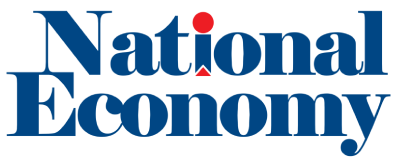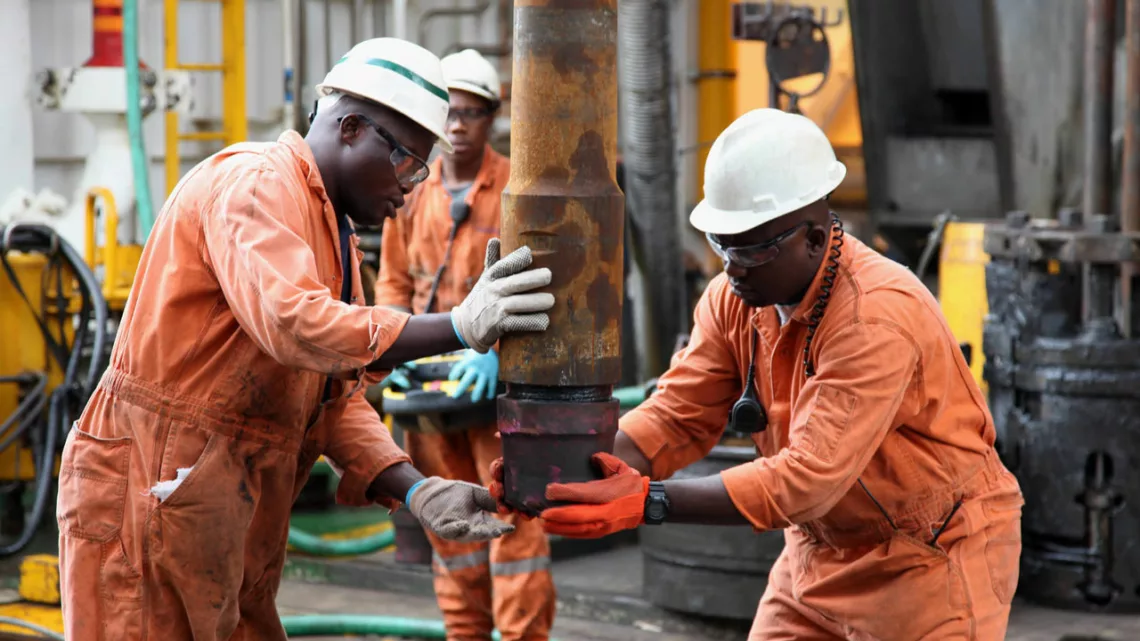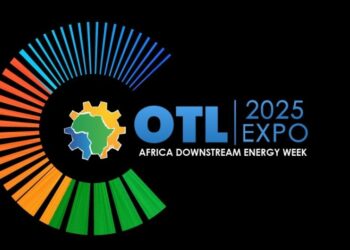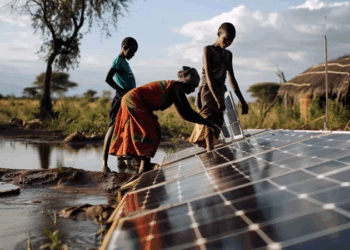The Organization of Petroleum Exporting Countries (OPEC), is promoting strong initiative to support oil market balancing and protecting interest of members to reap from sustainable pricing regime.
Nigeria a key member of the organisation is making deep rooted efforts to upscale production to meet its OPEC quota and in turn reap from the anticipated price surge.
Interestingly, Nigeria’s crude oil production for March 2023 edged up to about 1.6 million barrels per day (mbpd), with the country recording the biggest OPEC biggest increase last month, a survey by Reuters has revealed.
At about 1.6 million, the country was able to meet the federal government’s target for the first quarter of 2023, a survey by Reuters for March disclosed.
The latest production performance contributed significantly to the 28.90 million barrels a day mbpd pumped by OPEC.
Minister of finance, budget, and national planning, Mrs. Zainab Ahmed, had in December 2022, said at the World Bank’s Nigeria Development Update and Country Economic Memorandum in Abuja, that the government set its sight on Nigeria’s crude oil production reaching 1.6mbpd by the first quarter of 2023.
Ahmed hinged the government’s expectation on efforts made by stakeholders to improve oil production infrastructure and reduce oil theft.
Nigeria’s oil output as published by the Nigerian Upstream Petroleum Regulatory Commission (NUPRC) was 1.25mbpd in January and 1.3mbpd in February, but the volume produced for March came close to 1.6mbp.
Also, the Nigerian National Petroleum Company Limited (NNPC) had on several occasions disclosed that Nigeria’s oil production had climbed to 1.6mbpd, with the first of such disclosures coming early December 2022 from the chief investment officer of the NNPC Upstream Investment Management Services (NUIMS), Mr. Bala Wunti, at an industry event in Uyo, Akwa Ibom State.
At the February, meeting of stakeholders in the oil and gas industry in Abuja, the group chief executive officer of NNPC, Mallam Mele Kyari, had confirmed that the country’s oil production had risen to 1.67 million barrels per day, some millions short of the 1.8 million bpd quota allocated to Nigeria by OPEC.
Kyari had said the ‘rectangular’ security approach employed by the company was already working, adding that implementation of the ‘Detect, Deter, Destroy’ and Recover (3D strategy) has been a game changer in the fight against crude oil theft and vandalism.
The Reuters survey tracked supply to the market based on shipping data provided by external sources, Refinitiv Eikon flows data, information from companies that track flows such as Petro-Logistics and Kpler, and information provided by sources at oil companies, OPEC, and consultants.
The survey established that the increased output level by Nigeria, Africa’s largest oil and gas producer was recorded, despite a 70,000 bpd drop in the OPEC oil output in March, which was attributed to oilfield maintenance in Angola and a halt in some of Iraq’s exports.
Further revelation showed that OPEC’s output was down more than 700,000 bpd from September, and 70,000 bpd from February 2023 output level.
The largest drop of 100,000 bpd was in Angola and was due to a small export programme and field maintenance on the Dalia stream, resulting to exports hitting a multi-month low on some estimates.
The second-biggest drop came from Iraq, where companies have reduced output in the northern Kurdistan region following a halt to the export pipeline penultimate weekend.
Higher exports from southern Iraq limited the decline, the survey found, adding that OPEC’s output was significantly undershooting the targeted amount by 930,000 bpd because many producers – notably Nigeria and Angola – lack the capacity to pump at the agreed levels.
OPEC’s Gulf producers, Saudi Arabia, Kuwait and the United Arab Emirates maintained high compliance with their targets under the OPEC+ agreement, the survey revealed.
In a determined effort to grow production four states in the north have on a desperate search for oil which yielded results.
Recently, the NNPC successfully found oil in Nasarawa State with the potential for 1 billion barrels of oil and 500 billion cubic feet of gas.
Also, Kogi became the first northern state admitted as an oil-producing state in Nigeria and subsequently received an allocation.
On March 28, 2023, the Nigerian National Petroleum Company Limited (NNPCL) said it had successfully drilled oil in Ebenyi-1 in Nasarawa State. The new oil well is located in the Obi Local Government area of the state.
Interestingly, in show of solidarity to members’ efforts, several OPEC+ members shocked the market last weekend, when it announced further voluntary supply cuts. These cuts were announced ahead of the Joint Ministerial Monitoring Committee (JMMC) meeting scheduled for April 3, where the expectation was that the committee would recommend keeping output policy unchanged.
Nine members of the OPEC + group announced further voluntary cuts amounting to around 1.66mbpd.
However, 500,000 bpd of this is from Russia, which will be extending existing output cuts from the end of June until the end of this year. The reduction in Russian supply was already factored into ING’s balance.
Additional cuts from other members would total around 1.16MMbpd. These cuts will start in May and run through until the end of 2023. The bulk of the cuts will come from Saudi Arabia, which will reduce supply by 500,000 bpd, whilst cuts will also be seen from Algeria, Gabon, Iraq, Kuwait, UAE, Oman and Kazakhstan.
Given that most of these members are producing at or near their current quota levels suggests that actual supply reductions will not be too dissimilar to the paper cuts announced.
The move to reduce supply is fairly odd, said analysts. Oil prices have partly recovered from the turmoil seen in financial markets following developments in the banking sector. Meanwhile, oil fundamentals are expected to tighten as the industry moves through the year. Prior to these cuts, ING was already expecting the oil market to see a fairly sizeable deficit over the second half or 2023. Clearly, this will be even larger now.
The cuts suggest that OPEC+ were not content with Brent trading in the $70-80/bbl range. It would appear they want the floor for the market at even higher levels.
Although, Saudi Arabia stated that the cut is a “precautionary measure aimed at supporting the stability of the oil market.” This might make sense in the near term, however, the tightness in the latter part of the year suggests that this could, in fact, lead to further volatility in the market.
OPEC+ members can also cut without the worry that they will lose significant market share to non-OPEC members. In previous years, OPEC+ would have been hesitant to push prices too high, with the fear that it would lead to a strong supply response from U.S. producers.
However, it is clear that U.S. output growth is much more modest these days, with a change in mentality from U.S. producers- gone are the days of pumping as much as possible. Instead, capital discipline and shareholder returns appear to be the key focus now. Therefore, OPEC+ members can look to maximise revenues without the fear of losing significant market share.
While the cut is clearly bullish from a fundamental point of view, the group will also need to be aware of how the cut is perceived.
“The fact that we are seeing a sizeable supply reduction may suggest to some that OPEC+ is worried about the demand outlook in the current economic environment.
“Prior to these latest cuts we were expecting the global market to be in deficit by around 1.3MMbpd between 2Q23 and 4Q23. However, these cuts would push the deficit to in excess of 2MMbpd.
“We have not made any changes to our Russian supply number, given that we were already assuming a significant decline in output this year.
“A tighter market means that we now expect higher oil prices. Before the announcement, we were forecasting Brent to average US$97/bbl over 2H23. However, we now expect the market to average US$101/bbl over this period.
“There are clear risks to this view. The most important being the demand outlook. At the moment, global oil demand is forecast to grow by around 2m b/d in 2023. A significant amount of this growth is concentrated in China (close to 50%), so naturally this is a risk, given a substantial amount of demand growth hinges on one country.”
“Meanwhile, we will need to keep an eye on whether the aggressive tightening from central banks around the world leads to a stronger-than-expected slowdown later in the year. For now, we are still expecting marginal demand growth from OECD countries.”
The U.S. has already voiced its concerns over these latest cuts. Clearly, if prices push higher, we will likely see growing pressure on OPEC to increase output. Although, as seen over much of last year, they could very well choose to ignore this. This leaves the U.S. possibly tapping the SPR once again if needed, but given that the SPR is at its lowest levels since the early 1980s, they may be reluctant to do so.





